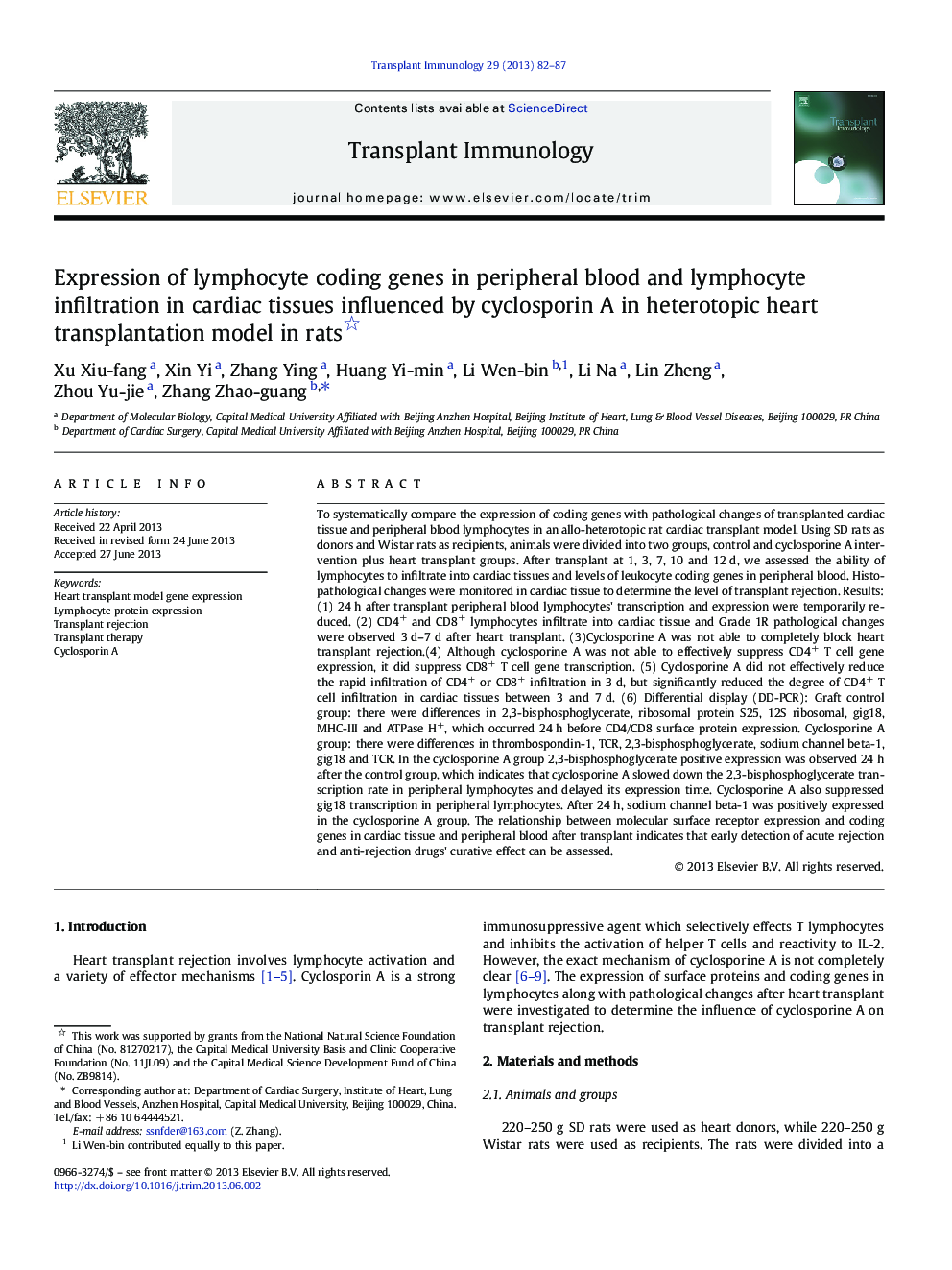| Article ID | Journal | Published Year | Pages | File Type |
|---|---|---|---|---|
| 6126038 | Transplant Immunology | 2013 | 6 Pages |
Abstract
To systematically compare the expression of coding genes with pathological changes of transplanted cardiac tissue and peripheral blood lymphocytes in an allo-heterotopic rat cardiac transplant model. Using SD rats as donors and Wistar rats as recipients, animals were divided into two groups, control and cyclosporine A intervention plus heart transplant groups. After transplant at 1, 3, 7, 10 and 12Â d, we assessed the ability of lymphocytes to infiltrate into cardiac tissues and levels of leukocyte coding genes in peripheral blood. Histopathological changes were monitored in cardiac tissue to determine the level of transplant rejection. Results: (1) 24Â h after transplant peripheral blood lymphocytes' transcription and expression were temporarily reduced. (2) CD4+ and CD8+ lymphocytes infiltrate into cardiac tissue and Grade 1R pathological changes were observed 3Â d-7Â d after heart transplant. (3)Cyclosporine A was not able to completely block heart transplant rejection.(4) Although cyclosporine A was not able to effectively suppress CD4+ T cell gene expression, it did suppress CD8+ T cell gene transcription. (5) Cyclosporine A did not effectively reduce the rapid infiltration of CD4+ or CD8+ infiltration in 3Â d, but significantly reduced the degree of CD4+ T cell infiltration in cardiac tissues between 3 and 7Â d. (6) Differential display (DD-PCR): Graft control group: there were differences in 2,3-bisphosphoglycerate, ribosomal protein S25, 12S ribosomal, gig18, MHC-III and ATPase H+, which occurred 24Â h before CD4/CD8 surface protein expression. Cyclosporine A group: there were differences in thrombospondin-1, TCR, 2,3-bisphosphoglycerate, sodium channel beta-1, gig18 and TCR. In the cyclosporine A group 2,3-bisphosphoglycerate positive expression was observed 24Â h after the control group, which indicates that cyclosporine A slowed down the 2,3-bisphosphoglycerate transcription rate in peripheral lymphocytes and delayed its expression time. Cyclosporine A also suppressed gig18 transcription in peripheral lymphocytes. After 24Â h, sodium channel beta-1 was positively expressed in the cyclosporine A group. The relationship between molecular surface receptor expression and coding genes in cardiac tissue and peripheral blood after transplant indicates that early detection of acute rejection and anti-rejection drugs' curative effect can be assessed.
Keywords
Related Topics
Life Sciences
Immunology and Microbiology
Immunology
Authors
Xu Xiu-fang, Xin Yi, Zhang Ying, Huang Yi-min, Li Wen-bin, Li Na, Lin Zheng, Zhou Yu-jie, Zhang Zhao-guang,
